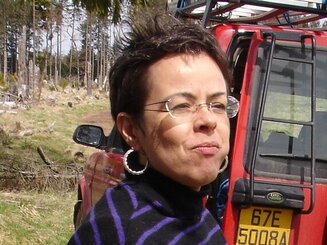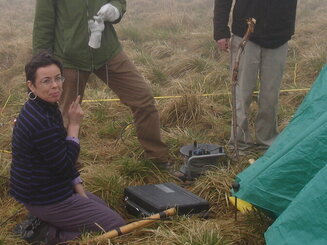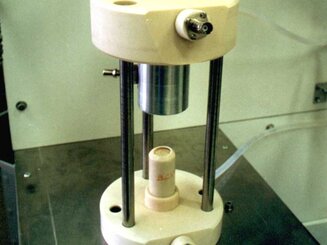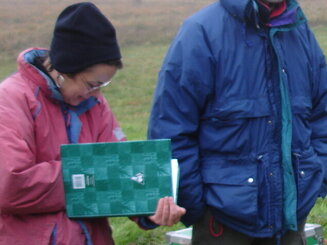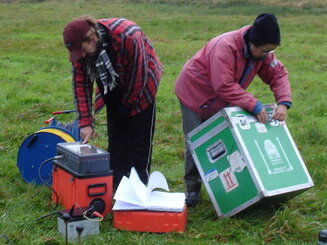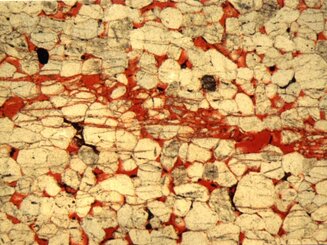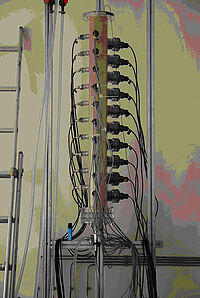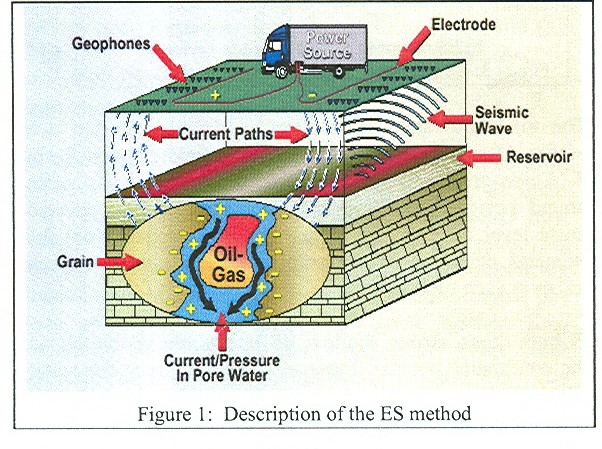Research director at CNRS
- Institut de Physique du Globe de Strasbourg
- CNRS
- Université de Strasbourg
- Researchgate
- ScholarGoogle
Research interests
My research interests are related to the electrokinetics in Earth Sciences. The electrokinetic effect arises from the coupling between the hydraulic flow and the electric flow in rocks. Why study this phenomenon? The electrokinetic couplings are present in many cases: hydraulic reservoirs or hydrocarbon reservoirs, volcanoes, subduction zones, hydrothermal zones, fractures, contaminated areas. Detecting these couplings, through electric or magnetic measurements, can help to better characterize fluids (water, ice, CO2, pollutants). The interpretation of observations needs a better understanding of these processes, both by laboratory and field measurements, and by appropriate modelling.
These couplings arise in static regime of fluid flow through self-potentials, and in transitory regime (related to the seismic wave propagation) through seismo-electromagnetic conversions.
You can read a TUTORIAL on electrokinetics in Earth sciences [pdf]; a short REVIEW on self-potentials [pdf]; a chapter on the permeability deduction from electrokinetic techniques [pdf].
Special Issue: Electrokinetics in Earth sciences: http://www.hindawi.com/journals/ijgp/si/431262
Hydro-electric couplings
We have to better understand the streaming potentials in rocks. The streaming potential is propotional to the water pressure gradient, so that it is a method able to detect the fluid flows. Measurements are performed from cm to m scale and are needed to constrain the modelling of the electric field and magnetic field induced by fluid flows in the crust. The behavior of the streaming potential with the water-content is still debated. Our team works to quantify the streaming potentials in sand as a function of the water-saturation, in collaboration with LHyGeS.
photo d’après V. Allègre [Allègre et al., GJI, 182, 1248-1266, 2010 pdf]
[Allègre et al., GJI, 189, 285-295, 2012 pdf]
[Allègre et al., Geophysical Prospecting, 63, 694-712, 2015]
Programme : REALISE
Transient Electrokinetics
We try to better understand the electrokinetics at the origin of seismo-electromagnetic conversions in saturated and unsaturated conditions [Strahser et al., GJI 187, 1378-1392, 2011 pdf], and to use these conversions as an imaging tool. The seismo-electromagnetic signals are induced by the propagation of the seismic wave in the crust, because of the movment between the water and the rock when the seismic wave travels. The seismo-electromagnetic method is expected to combine the spatial resolution of the seismic methods to the the sensibility of the electrical methods to the water-content. This method is used to characterize the hydraulic reservoirs and the hydrocarbon reservoirs.
scheme from Thompson et al. (2005).
The interpretation of the seismo-electromagnetic conversions observed in the field is still difficult. Our team works on this subject through the project ANR-TRANSEK, in collaboration with université de Pau et des Pays de l’Adour (LFC, UPPA) and université de Grenoble (IsTerre, UJF).
[Warden et al., Geophysical Journal International, 194, 1498-1513, 2013]
[Warden et al., Geophysical Journal International, 190, 1533-1550, 2012]
[Jouniaux and Bordes, Internationla Journal of Geophysics, article ID648781, 2012]
[Jouniaux and Ishido, International Journal of Geophysics, article ID286107, 2012]
Projet : ANR-TRANSEK link

